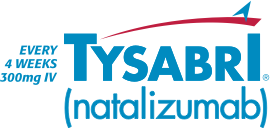TYSABRI SAFETY: A WELL-UNDERSTOOD PROFILE
The risk of developing PML while on treatment with TYSABRI is <1% regardless of JCV status1
- PML is an opportunistic viral infection of the brain caused by the John Cunningham virus (JCV) that usually leads to death or severe disability. JCV infection is required for the development of PML
- There are no known interventions that can reliably prevent PML or that can adequately treat PML if it occurs
- PML is not the only factor to consider when assessing the safety profile of TYSABRI
- Previous immunosuppressant use and treatment duration with TYSABRI are PML risk factors for JCV+ patients
- Biogen offers free anti-JCV antibody testing (the STRATIFY™ JCV Antibody assay) to support regular monitoring
